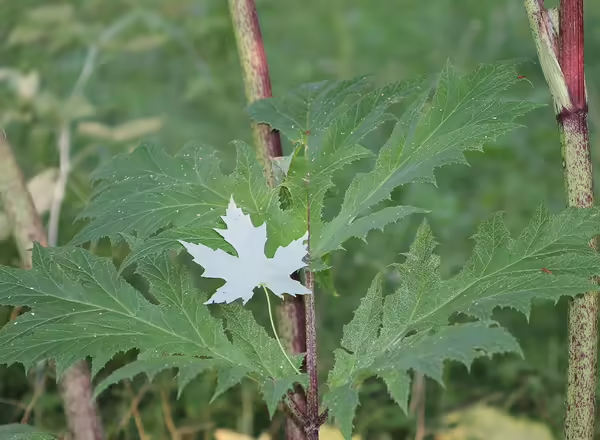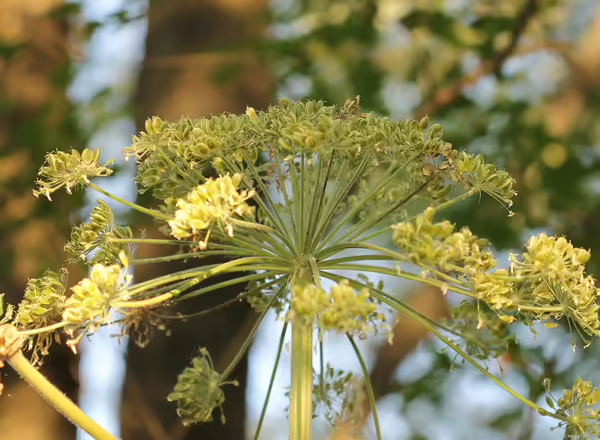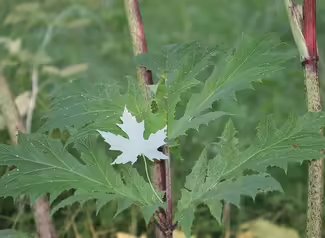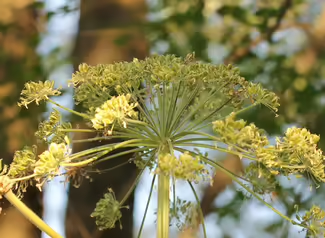
Invasive Giant Hogweed
Giant Hogweed Damage
Giant hogweed (Heracleum mantegazzianum) is an invasive weed that can quickly overtake an area by crowding out other plants. It also poses a serious health risk because contact with the sap can cause severe chemical burns, rashes, and even blindness. Simply brushing by the leaves can be enough to come in contact with the sap, in addition to breaking the stems or leaves.
History of Giant Hogweed
Giant Hogweed is an invasive plant from Asia and is used as a spice in Middle Eastern dishes. The USDA also indicates that it was likely introduced as an ornamental plant also due to its really large leaf and flower size. This invasive has previously been identified in a couple of Illinois counties. As of 2021, it is believed to be eradicated from Illinois.
Regulation of Giant Hogweed
Giant hogweed is a Federal Noxious Weed and the Illinois Exotic Weed Act.

Start looking for giant hogweed in Illinois in May as it begins to send up flowering stalks. It prefers moist soils in partial shade like riverbanks, old railroads, or disturbed wooded areas and can be confused with cowparsnip or elderberries. It can live for multiple years as a rosette before it sends up a flower stalk. The plant can grow to heights of 10 to 15 feet and a width of 5 feet. It is a biennial or short-lived perennial that has a mostly green hollow stem with reddish purple raised spots, along with coarse short hairs on the stalk. The stem can grow to 2 to 4 inches in diameter. The leaves jagged and toothed. The plant has small white flowers in flat umbels that bloom in mid-May through July. The seeds are elliptical-shaped and one plant can produce up to 20,000 seeds. After seeding, the plant dies back to the taproot which can live throughout the winter.

Correct identification is the first step to management of this species. If you think you have giant hogweed, then take some details photographs and work with your local University of Illinois Extension office to get it properly identified. It is highly recommended that when dealing with this plant one should wear gloves and protective clothing to allow no contact with skin.
Download the Giant hogweed comparison and identification infosheet
Do not attempt to pull, cut, or mow this plant. Consult a professional for management advice.
More Resources concerning Giant Hogweed
- Home, Yard, Garden Newsletter, Giant Confusion: Giant Hogweed and Common Look-Alikes
- Carrots gone bad: Wild parsnip, giant hogweed and poison hemlock

